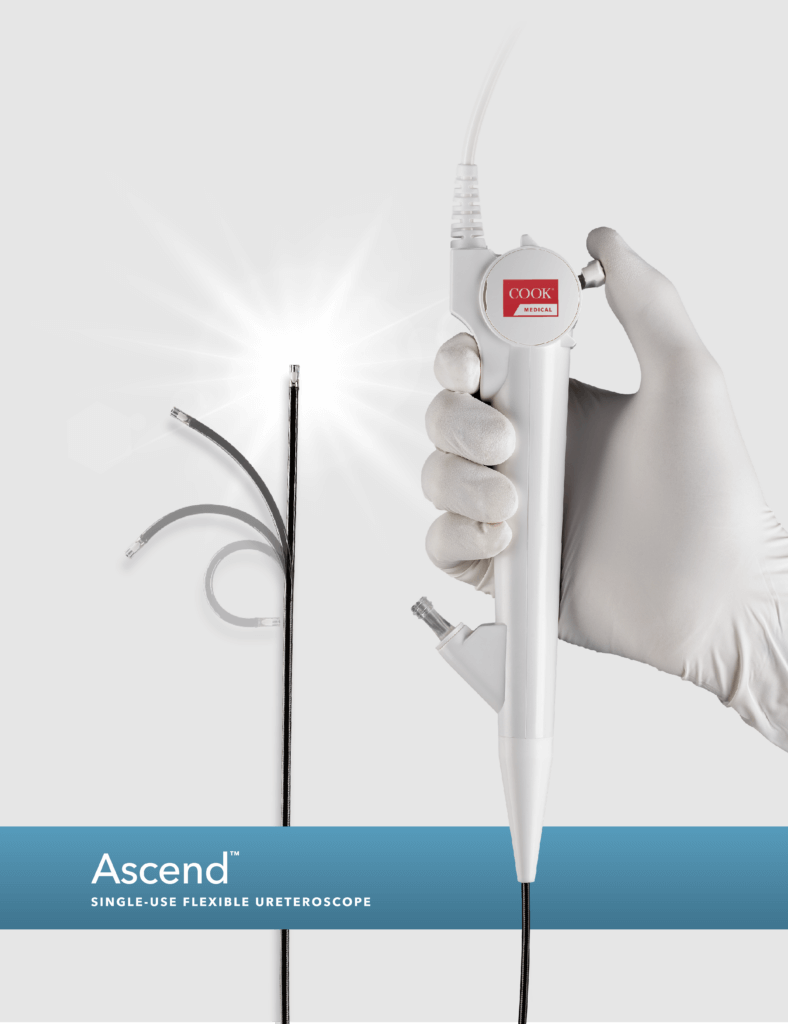The emergence of single-use flexible ureteroscopes has sparked significant interest within the urological community. While reusable ureteroscopes have long been the standard, making the switch to single-use devices has its advantages.
1. Enhanced safety
The off-the-shelf and readily available single-use ureteroscope eliminates the risk of cross-contamination associated with reusable devices, enhancing patient safety and reducing the transmission of infectious pathogens. Each procedure is performed with a sterile, manufacturer-sealed device, minimizing the potential for healthcare-associated infections and postprocedural complications.
2. Convenience and accessibility
Single-use ureteroscopes offer convenience and accessibility, particularly in outpatient and ambulatory settings where speed and efficiency are paramount. These disposable devices are readily available and do not require extensive setup or sterilization procedures, allowing you to perform procedures with minimal preparation. Additionally, single-use scopes may be especially beneficial in remote or resource-limited settings, where access to sterile reprocessing facilities may be limited.
3. Streamlined workflow
With a one-and-done scope, you can bypass the time-consuming reprocessing and sterilization steps required for reusable devices. A simplified workflow leads to faster turnaround between procedures, increased patient throughput, and improved efficiency.
4. Consistent performance
Single-use ureteroscopes offer consistent optical and mechanical performance without the variability associated with reusable instruments. By eliminating the need for maintenance and calibration, single-use devices ensure reliable image quality and maneuverability for every procedure.
5. Cost-effectiveness
While single-use ureteroscopes may have a higher up-front cost per procedure compared to reusable devices, they offer potential cost savings in the long run. By eliminating the need for maintenance, repairs, and replacement parts associated with reusable instruments, single-use ureteroscopes can reduce overall operating costs for urology practices.
Knowing the limits of your reusable ureteroscope
Reusable scopes have always had limitations—the most prominent drawbacks being challenges with reprocessing, maintenance and repair costs, and workflow disruptions.
Reprocessing challenges
A reusable ureteroscope requires meticulous reprocessing and sterilization between uses to prevent cross-contamination and ensure patient safety. This scope’s complex instrument design and narrow lumens makes thorough cleaning and disinfection challenging, increasing the risk of residual contamination.
Maintenance and repair costs
Traditional reusable ureteroscopes often require additional costs to maintain, including repairs, replacement parts, and periodic refurbishment. The wear and tear from repeated use may lead to performance degradation (scope fatigue) and may compromise image quality, necessitating costly repairs or replacement.
Workflow disruptions
The reprocessing and sterilization process for reusable ureteroscopes can disrupt your workflow and increase turnaround time between procedures. These delays in instrument availability may impact scheduling and patient satisfaction, particularly in busy clinical settings.
Addressing questions about sustainability
Inevitably, the conversation around single-use versus reusable leads to questions about sustainability and the environmental impact of disposable medical devices.
These concerns haven’t gone unheard, and manufacturers are increasingly exploring sustainable materials and production processes for single-use medical devices to minimize environmental impact.
And when it comes to waste management, proper disposal practices, including recycling and waste-to-energy conversion, can mitigate the environmental impact of single-use ureteroscopes. Healthcare facilities can, and often do, implement recycling programs and environmentally friendly disposal methods to minimize landfill waste and promote sustainability.

